Editorial
Should predatory journals be eliminated completely from the research community?
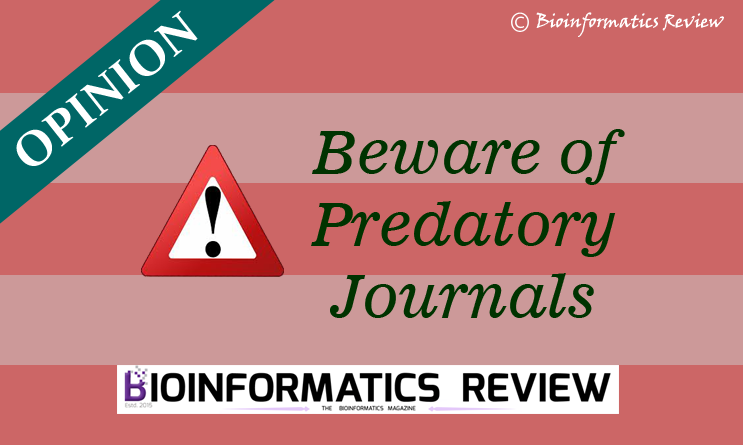
The fast-emergence of predatory journals is a new problem in the scientific research area. These journals send attractive advertising emails to the authors to seek money and in turn, they don’t provide any proper service including a peer review for their article. As a result, they publish research studies irrelevantly for the sole purpose of draining the money down from the authors. This is affecting the research quality in the scientific field.
As we all are aware of Beall’s list [1] created by Jeffery Beall, an academic librarian at the University of Colorado in Denver, it lists all the predatory journals and publishers as mentioned in one of our previous articles. It represents a valuable tool for researchers to be aware of predatory journals. This list is growing continuously over time. Although Beall’s list has a few shortcomings for which it has been criticized for some reasons by some researchers and publishers. These reasons include the weak methodology used by Beall’s list to classify a predatory journal and some journals pointed out that Beall added newly started journals without contacting and discussing their publishing policies.
Now, various scientists are objecting to the predatory journals [2] and some of them have urged publishing companies to establish their standards so that they could easily differentiate predatory journals from real scientific ones [3]. Besides, these journals are causing great harm to the scientific community. There are some predatory journals that even display a fake impact factor on their website just to attract the authors, which as compared to the real scientific journals is higher. This is just increasing the number of publications in scientific literature without any significant contributions.
Some of the major problems and harms caused by these journals include the lack of significant information, less and irrelevant data, damaged reputation, lack of knowledge and quality control. Young researchers need to think about the harmful effects of publishing in predatory journals. What is the use of such research which can not benefit the scientific community? They must be aware of their external reputation damage as well.
Journal Citation Report (JCR) provides a list of journals with an official impact factor. But most of the new researchers are not aware of this. The question arises here is that either the predatory journals should be completely eliminated? or the scientific journals and publishers should strengthen the open-access concept and contribute significantly toward the scientific community. Further, there is a strict demand for a new system to identify predatory journals and the articles published in it.
References
- Butler, D. (2013). Investigating journals: The dark side of publishing. Nature News, 495(7442), 433.
- Richtig, G., Berger, M., Lange‐Asschenfeldt, B., Aberer, W., & Richtig, E. (2018). Problems and challenges of predatory journals. Journal of the European Academy of Dermatology and Venereology, 32(9), 1441-1449.
- Strielkowski, W. (2017). Predatory journals: Beall’s List is missed. Nature, 544(7651), 416.
Editorial
Why are we moving towards Bioinformatics?

Bioinformatics has become a quite familiar term since the last decade. As we are aware, bioinformatics is an interdisciplinary field that incorporates biological science and computer science. The main focus of bioinformatics is to solve biological problems by applying methods and techniques of computer science. (more…)
Editorial
Editorial: Bioinformatics Review- New Year New Goals

As we enter into a new year, we are trying to set new goals and achievements. It has been more than 5 years since Bioinformatics Review came into existence. It has been a great journey till now. (more…)
Editorial
Dry Lab & Pandemic – Let’s Give Some Credit to Bioinformatics!
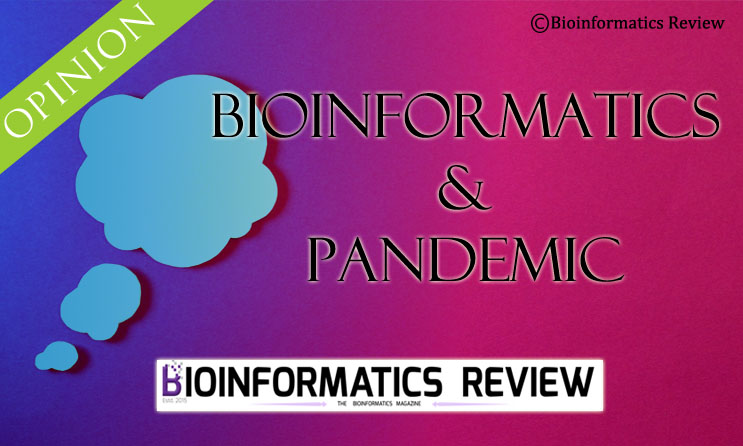
In this time of pandemic since the covid19 outbreak created a great threat to human health, the need for e-services has increased. This can be observed almost in every field including education, jobs, academics, and research. Online services are the safest mode of networking these days. When we talk about research, it is not possible to work online completely. (more…)
Editorial
Editorial: Bioinformatics Review- A Long Way Ahead
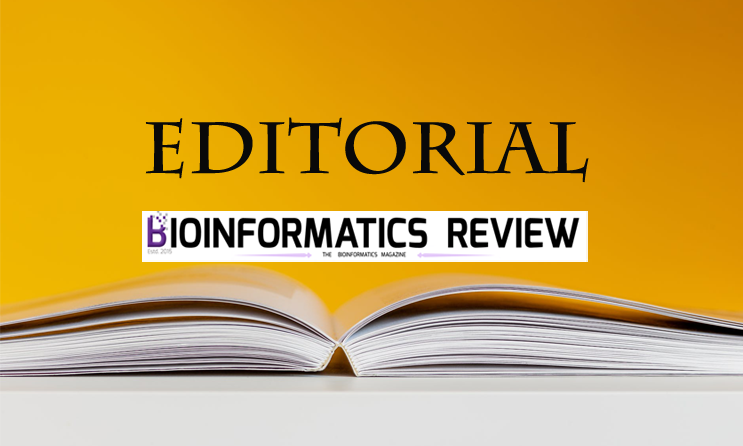
Bioinformatics Review is moving forward towards completing its fifth year since 2015. Since then it has grown with the support of our readers and subscribers. We would like to thank them all. We get a lot of appreciating emails and suggestions from our readers. We are glad to know that our published articles are reaching such a great audience. (more…)
Editorial
Myths about Bioinformatics
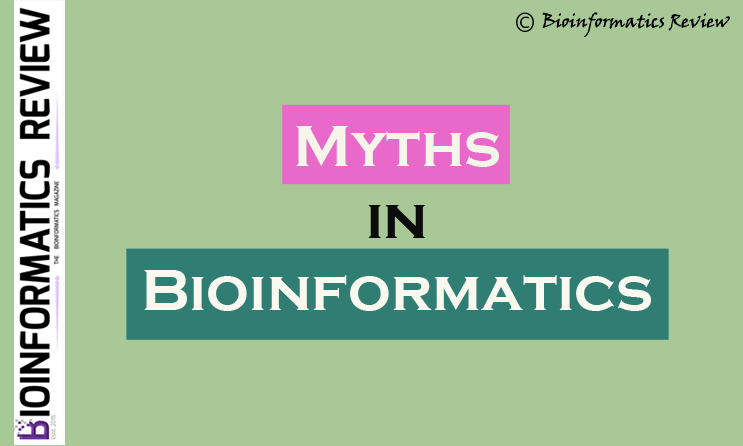
Bioinformatics is rapidly growing since the last few decades and has revolutionized biological research. Researchers are capable of developing therapeutic drugs efficiently, capable of getting rapid results, easy to generate predictions to be tested in an experimental lab, and it has broad applications in the future. However, alongside the increasing applications of the bioinformatics field, some myths have also arisen about it. (more…)
Editorial
Editorial: New perspectives for BiR with a new year

Welcoming BiR into a new year full of goals, new developments, and achievements. This year’s resolution of BiR is to take this endeavor to a brand new platform of international standard and reputation necessary for spreading the knowledge of bioinformatics. (more…)
Editorial
Ph.D. students to be declared “bandhua mazdoor” (bonded labour)

A Ph.D. degree is considered difficult to get, you have to do a lot of hard work and give up certain things such as social life, friends, health, fun time, and many others. At first, it is quite difficult to get admission in fine universities for a Ph.D. and then after getting one, it is more difficult to survive. Although the Ph.D. degree is awarded for research when you contribute something novel in your field. But the system has made it quite difficult by implicating various criteria such as the number of papers to be at least published and authorship. (more…)
Editorial
“Congrats! it is a nice work!”

After a lot of painstakingly-hard work, researchers publish their papers in reputed journals. There is a huge number of journals worldwide. For the same reason, research published in a very small group of journals can be blindly trusted as authentic and well-founded. This is due to mushrooming of predatory journals, which needs to be weeded out by the scientific community. (more…)
Editorial
“What is the scope of bioinformatics?” Do we really need to ask this?

“What is the scope of bioinformatics?” This is the question which is most frequently asked by some students and scholars. The real question is do we really need to ask this? Bioinformatics is an interdisciplinary field including computer science, chemistry, mathematics, physics, and many disciplines. (more…)
Editorial
BiR-Taking it to the next level: Editorial

As we dive into a new year, BiR desires to take a step forward towards the new developments and achievements. BiR has achieved a lot since the time of its existence in the form of our readers who have been a wonderful motivation for us. (more…)
Editorial
Bioinformatics is prediction- and simulation-based: Let’s rephrase the conversation!

Since the field of Bioinformatics has come into existence, general opinion has been that ‘Bioinformatics is all about predictions, experimental-based, and talking everything in the imagination’, or ‘the probabilistic outcomes must be approved in real world’ or ‘ the Bioinformatics results will have to be testified using the wet lab’. This indeed is true, all the predictions made by Bioinformatics drafted experiments, must be testified using the wet lab. We cannot ride on a long way just on the basis of predictions and assumptions. But what if this is just one side of the coin? We still need to flip over to see the other side of Bioinformatics. (more…)
Editorial
Editorial: Need to re-formulate the bioinformatics curricula at undergraduate and postgraduate level
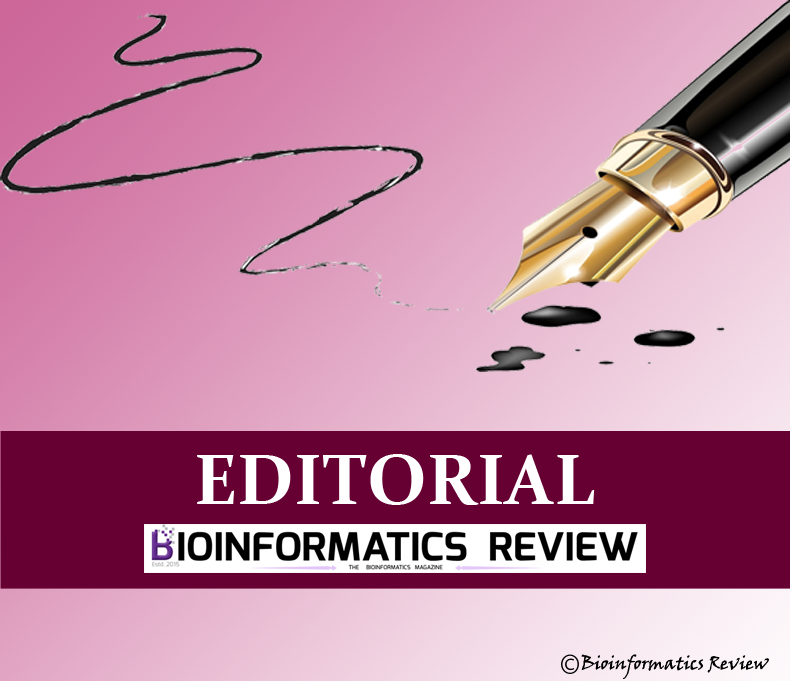
Bioinformatics is interdisciplinary of Computer science and Biological science, requires the knowledge of both these broad disciplines. It combines biophysics, statistics, maths, and chemistry to provide software and tools which help in understanding biological data. (more…)
Editorial
Do we need more bioinformaticists or bioinformaticians?

As we all know the major difference between a bioinformaticist and a bioinformatician is that a bioinformaticist is an expert in developing software, tools, interfaces for effective use of these tools with a pure knowledge of their usage, on the other hand, a bioinformatician is a skilled person with knowledge of the application of these tools and software without a deeper understanding of their workflows. (more…)
Editorial
Bioinformatics- A broad future ahead: Editorial

It has been a wonderful time since BiR came into existence. As we enter a new year, BiR tries to look forward to the development and wonderful achievements and providing the best knowledge regarding bioinformatics. In the past two years, BiR has hit a long road from a few readers to several thousand. (more…)
Editorial
Editorial: Way to go for Bioinformatics, time for re-evaluation of concepts (of education)!!

Although Bioinformatics is a synthesis of broader disciplines, being a new tool around the corner a number of books have surfaced very recently to help tackle the subject in a more methodical way. These books form a foundation of this subject and are therefore referred to by teachers, students, and professionals alike. Some of these books are “almost there” as a standard textbook for a naive, or the quintessential “beginner”.
In this month’s issue, I take this opportunity of coming up with an editorial to discuss some of these books, not by reviewing the books ‘per se‘ but to try and classify them in their merits along the lines of their popularity among masses and peeking into reasons for their popularity.
The criterion for selection of these books is on the basis of what is available in the Indian market and what is recommended by peers. These books are (in the order of their popularity) Bioinformatics and Functional Genomics by Jonathan Pevsner (Wiley-Blackwell, First published November 2003), Bioinformatics: Principles and Applications by Ghosh and Mallick (Oxford University Press, Published 2008), Biological Sequence Analysis by Durbin et al., by Cambridge University Press and Bioinformatics: A Practical Guide to The Analysis of Genes and Proteins by Andreas D. Baxevanis and B.F. Francis Ouellette (Wiley-India Edition, 2006) and finally Bioinformatics by D. Srinivas Rao (Biotech Pharma Publications).
Among these, the book by Jonathan Pevsner is one of the best and popular among Indian Universities due to its finesse, quality of content, and an in-depth coverage of the subject. The entire book is divided into three main sections: Sequence Analysis, Functional Genomics, and Genomics. The book discusses major concepts with decent coverage to help develop an understanding of the subject matter and its conceptual intricacies. The book by Andreas et al. substantiates Pevsner very well by bringing a practical guide to deal with sequence data analysis and phylogeny inference using molecular data. All in all these two books, complete the learning loop very much for an undergraduate course syllabus. However, these books have been surpassed in sale and popularity among Indian students who find the second most popular book by Ghosh and Mallick as a better resource to understand Bioinformatics. The book is undoubtedly lucid, simple and straightforward, to the point and more being a textbook in its flavor and approach with which it heads to tease the subject. Its popularity among masses of different tiers of graduating students and academician needs to be understood from various aspects viz. the amount of peer pressure among Indian University students to perform over learning and having fun with the subject matter. The book is an excellent comprehension of Bioinformatics tools and techniques available to us by various databases and other resource centers and caters to the need of graduate students. However, somewhere between motivating a student to take up the subject as a career option, it is reduced as a shortest possible route to clear an examination and to get on with the life. I have been teaching undergraduates for 4 years now and this is the general trend/belief of the masses.
Introspecting the causes, it occurs to me that it is neither the book (the man’s best friend) at the root cause nor a specific subject. It is the entire mashed up concept of education that is making masses perceive education as a bitter pill. It is not about Indian versus Western Education. It is about what we perceive education to be, the parents or parents to be, the teachers or the teachers to be, the students, the researchers, the educators and the policymakers of education who need to revisit the basic idea of What is the aim and scope of Education? What is the need for higher education? Why do we need to go beyond a basic level of Education, and if at all we need to, to whom should we administer a particular level of education beyond basics? If these questions are not asked or introspected by us now, we run the risk of having highly educated (?) and yet good for nothing people all over the place ruining the sacrosanct meaning of being educated and learned people.
Gladly (or Sadly), the times are so rapidly changing in Indian setup of education at school and higher level that one cannot predict the future of the future generations. The emphasis is more on skill development and career-oriented courses. It might be excellent for an economy as per economist’s projections or market analyzers, but what about the satisfaction of gaining knowledge and subsequently becoming less anxious, more contented, more subtle. Can’t we strike a balance if not anything else? From where and how the balance will be obtained? There are question and points to ponder over and over again…
Write us back at [email protected]
Prashant Pant
Editorial
Leading the future and learning from your elders: experimental ecology and ‘the omics’ for emerging Bioinformaticians
Editorial
Bioinformatics Review (BiR): Bridging Between The Two Worlds

Informatics and Biology are two sciences which are as different from each other as possible. One runs on the core concept of variation and another on strict reasoning. But still, these two have combined in a most natural way under the realm of “Bioinformatics”. For a biologist today it’s difficult to imagine a world without all biological databases and further no branch to decipher the huge enigma that it brings. Bioinformatics Review (BiR) journal is a platform to discover the latest happenings in this melting pot of two varied fields. (more…)
Editorial
Editorial, Looking forward and beyond

It’s all warm in BiR as we are inching towards next-to-next big hit with passionate and selfless efforts. The team has been up-regulated for its responsibility and assignment, assuring high-quality content and superfine bioinformatics news to keep you restlessly-looking-forward to the next issue. (more…)
Editorial
BiR gets to the next level and future prospects of Bioinformatics Review: where do we stand and what now?

A piece of news highly awaited for just arrived on 8th of March, 2016. It was a moment when it was most required and also most unexpected. The news was that BiR has matured to deserve an ISSN (International Standard Serial Number) code. It is great moment for BiR. Team BiR is proud to announce ISSN 2455-6645 (online) accredited to The Bioinformatics Review, an online science e-journal. I would like to re-emphasize our mandate and that is to be a reputed, peer reviewed Bioinformatics and Computational Biology Reporter e-journal for students, teachers and researchers. Eventually, BiR plans to expand its horizons to also publish full length research articles and review papers.
We thank whole heartedly to all our supporters, subscribers, contributors and everyone who has made us believe in who we are and what we can do, and relentlessly reminding us that it will happen. Quintessentially, “Hum Hongey Kaamyaab” (We Will Win) is a perfect depiction of what we went through and what we looked up to in down times. It took more than six months to realize this dream and now that it has happened, we at BiR realize the importance of quality work and of original creations to justify such a high accredition. We, as we have done in past, will strive harder and harder to justify our commitment to society and science without resting. At this juncture, I am reminded of my post-graduation days when I was introduced by my mentor to the field of Bioinformatics and Computational Biology. At that point, all I could get was that it is highly interdisciplinary in nature, very much like Biotechnology but it’s actually much more than that. It is the future of biological sciences where in silico analyses of the data will drive and guide the wet lab experimentation part of biological sciences making it all the more productive and precise and thus efficient. That said, it strikes to me to introduce the basics of this subject to our school going, computer savy, net friendly generation who apparently is more fascinated by technology. To catch them young and train their minds for what they want to do in life would not be a bad idea, and that goes very well for Indian system of education in particular because there is a discord between students opting for medical/biological sciences and ones opting for Non-medical or Non-biological sciences. Bioinformatics, in particular, suffers from this discord as it is an amalgamation of biology with Computers and to a e large extent mathematics. I have seen many of my graduate students getting stuck in Bioinformatics mainly because they streamlined themselves at a very early stage and completely ignored even the basics of higher mathematics at secondary level. This is a major hurdle for taking up Bioinformatics as a career option. It is not that it is too late but the long gap after school leaving haunts them and most don’t dare to fill the gap. This goes equally well for students of Computer sciences and Maths who are good programmers and understand machine language but are deprived of even basics of biology. This discord, in my opinion has been a major cause of bioinformatics lagging as a popular subject in India and can only be resolved by careful informed decision to be made during selection of subjects at Senior secondary level so that there is no looking back later and secondly, by calling for reforms in education system. I am certain that the former resolution can be taken without any further delay while second option is a long term exercise and will takes its own course.
I would appreciate further discussion and feedback on this from our readers. Looking forward to continuous support…
Thanking all the readers and contributors once again…
Prashant Pant
Editor-in -Chief
Bioinformatics Review
9th March 2016
Editorial
EDITORIAL: Welcoming BiR in its 2nd year

With the dawn of a new year, BiR hopes to mark an important year filled with new developments and landmark achievements. This year’s resolution of Team BiR is to take this endeavour to a brand new platform of international standard and reputation necessary for spreading the good work. (more…)




You must be logged in to post a comment Login